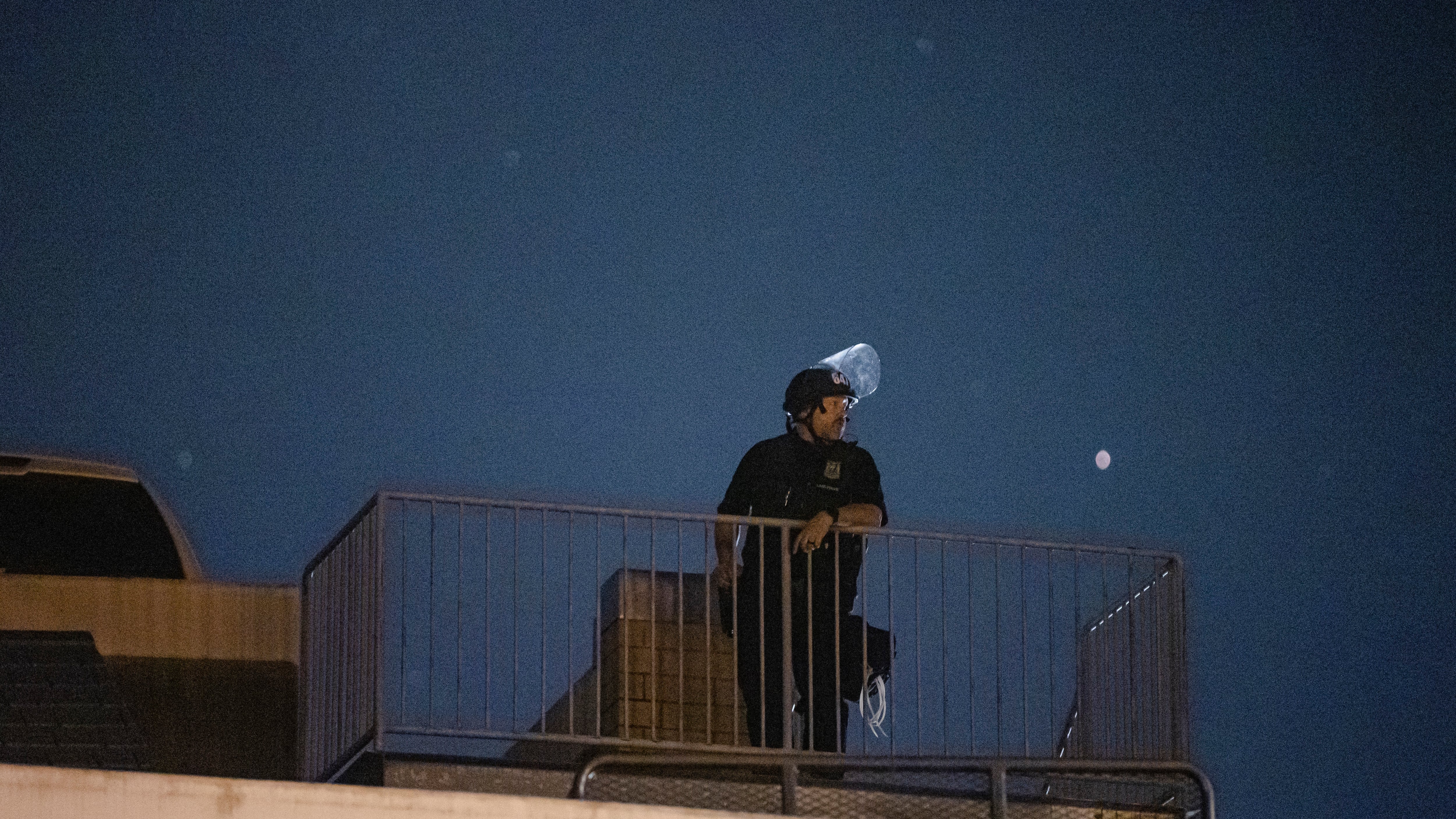The City Auditor’s Office released a report last week that found the Portland Police Bureau collected “personally identifiable information” about 2020 protesters without documenting any suspected criminal activity.
The report also said the bureau’s Criminal Intelligence Unit violated its own procedures by retaining records detailing political activity beyond the 30-day limit for files in which the suspected criminal behavior is unsubstantiated. That was the case for six of the 33 files the city sampled for its audit.
Bureau procedure says access to such reports should be relegated to staff in the Criminal Intelligence Unit, according to the audit. But instead, they were accessible through the central records management system, meaning any sworn officer employed by Portland or a partner agency—such as Lake Oswego or Scappoose police—could access those files if they searched for a name mentioned in the record.
The upshot of that data collection and retention, the auditor concluded: An officer who pulls someone over for a routine traffic stop would also have access to the driver’s purported political or religious activity.
“Such searches commonly are conducted during routine traffic stops,” the Auditor’s Office wrote. “Officers might perceive drivers to be a threat during traffic stops if they access reports that say drivers were involved in Black Lives Matter protests or played music perceived to be anti-police.”
The reason for the mismanagement of records: Portland’s Criminal Intelligence Unit “does not have a process for protecting political or religious information that was not related to criminal activity.”
The bureau also failed to codify policies for most of its surveillance tools, according to the Auditor’s Office.
The audit found that PPB uses 37 types of technology that are “capable of collecting sensitive information,” including wire taps, license plate readers and cellphone extraction tools, such as Cellebrite, that can extract and download photos, videos and even deleted text messages from a suspect’s device.
Of those 37 surveillance tools, the bureau lacked policies for more than half.
“Policies were absent for 21 types of technology that can be used for surveillance,” the audit said. “Usage reports assessed the effectiveness of the technology but were missing other elements….None of the reports addressed cost or whether any improvements or modifications were needed.”
The City Auditor’s Office provided WW a list of 33 of the 37 surveillance tools, claiming exemptions under Oregon Public Records Law to withhold the remainder because disclosure would “endanger an individual’s life or physical safety or jeopardize a law enforcement activity.” (The auditor sought a comprehensive list of PPB surveillance tools, meaning the list was not protest-specific. Several of the tools, for example, are used primarily by the bureau’s Special Emergency Reaction Team, similar to a SWAT unit.)
Here are three examples of surveillance technology the Portland Police Bureau uses without a policy.
1. Room x-rays
The Auditor’s Office did not provide more specifics about how, exactly, the bureau uses this form of technology. But in recent years, police agencies nationwide have been scrutinized for their use of so-called Doppler radars, whose brand name is Range-R—a device first used by the U.S. military in Iraq and Afghanistan that allows the user to essentially see through walls.
“The radars work like finely tuned motion detectors, using radio waves to zero in on movements as slight as human breathing from a distance of more than 50 feet. They can detect whether anyone is inside of a house, where they are and whether they are moving,” USA Today wrote in 2015.
2. Robot cameras
It is unclear how many robot cameras PPB owns, and the circumstances and frequency in which they are deployed. But the “semi-autonomous technology” is used by police departments across the globe, according to Wired.
The New York Police Department, for example, has a 70-pound robotic dog that can apprehend suspects and see in the dark, The New York Times reported last year. The use of “Digidog” drew scrutiny from the American Civil Liberties Union, as well as Congresswoman Alexandria Ocasio-Cortez (D-N.Y.), who tweeted that “robotic surveillance ground drones are being deployed for testing on low-income communities of color with underresourced schools.”
3. Forward-looking infrared cameras
Another surveillance tool PPB uses but lacks a policy for are forward-looking infrared cameras, or FLIR for short.
The mounted thermal heat cameras can achieve a result similar to room x-rays. But rather than spotting radio waves, they can detect heat.
Law enforcement’s use of heat sensor cameras, or thermal imagery, in Oregon has set national precedent. In 1992, prosecutors indicted Danny Kyllo of Florence, Ore., on a federal drug charge after a Department of the Interior agent used a thermal camera to detect heat emanating from the high-intensity lights used to grow cannabis plants in Kyllo’s home.
In 2001, in the case of Kyllo v. United States, the U.S. Supreme Court ruled that police violated Kyllo’s Fourth Amendment protections against unreasonable searches because the use of thermal imaging constituted a “search” of Kyllo’s home although law enforcement failed to secure a warrant to employ the technology.
“We have said that the Fourth Amendment draws ‘a firm line at the entrance to the house’….That line, we think, must be not only firm but also bright—which requires clear specification of those methods of surveillance that require a warrant,” Justice Antonin Scalia wrote in the opinion.

